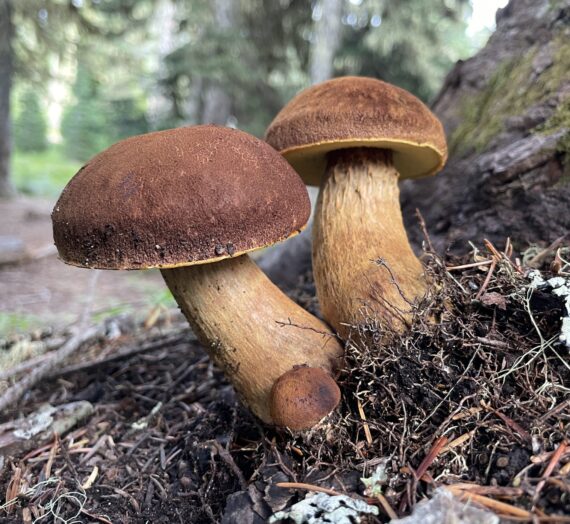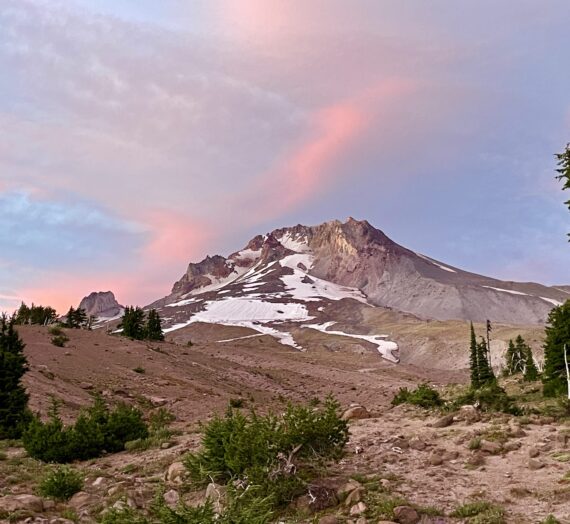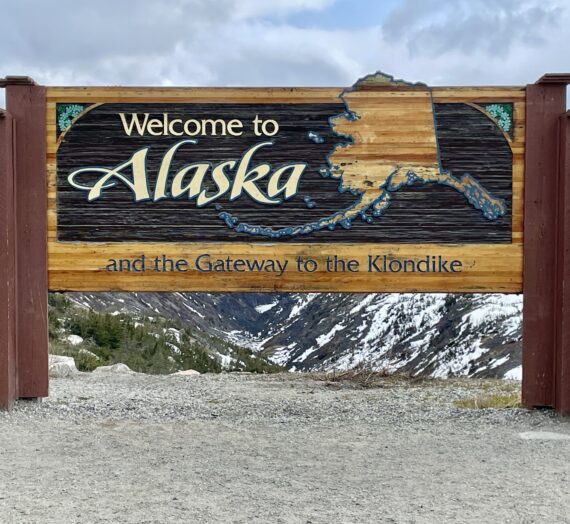Alaska is so vast; a land of wide open spaces and very few roads. Here in Southeast Alaska, roads are especially rare. Many communities along the Inside Passage are only accessible by boat or plane.
But Skagway, Alaska, where I’m living this summer, is rare because it has access to the interior by a road. From Skagway, we can drive up and over White Pass, into British Columbia and Yukon Territory along the Klondike Highway.
Won’t you join me for a tour? I love to share facts about the natural history along this beautiful ride.


Welcome aboard Bus 107. My passengers call it Becky’s Bus.
Heading up Through the Temperate Rainforest into the Tundra
As we drive north out of Skagway, we immediately start to ascend in elevation. This offers some views of the surrounding forest.
The low elevation area around Skagway is the northern reaches of the Pacific Coast Temperate Rainforest. This rainforest is over 2,000 miles long and stretches from Northern California, along the coasts of Oregon, Washington, British Columbia and throughout SE Alaska. It is considered one of the largest rainforests in the world!




As we continue to climb upward, the trees start to change drastically. Near the top of the pass, we enter the Sub-Arctic Alpine Tundra. This nearly treeless landscape is characterized by short, low-growing shrubs, mosses and lichens. The winters are long up here, brutally cold and drier than you would expect, with the majority of precipitation falling as fog and snow. So the trees and shrubs grow huddled close to the ground for warmth.


Finally, we crest White Pass at 3,292 feet, and officially cross the border into British Columbia, Canada. Laid out before you now is the Tormented Valley, named for its torturous winds. But I think the incredible views torture your heart as well! I was so lucky to experience this magical landscape during the early spring.






At this elevation, the month of May is the time of year called the “Break-Up”. This is when ice is thinning and breaking up into open bodies of water. The blue water that you see is the result of snowmelt, but the cloudy greenish water has melted from a glacier. It was amazingly beautiful to witness this season in the north country.








By June, the tundra came alive with new growth, grasses and wildflowers. Now, it’s so green!









Building Up and Breaking Down, a Story of Uplift and Glaciation
The mountains of Southeast Alaska are part of the Coast Mountains. They are the product of plate tectonics and uplift. The Pacific Plate under the Pacific Ocean has been pushing, or sub-ducting, under the North American Plate for eons. And like a front end-car collision, this has created the land to rumple up or continually uplift all of these mountains along the coast.
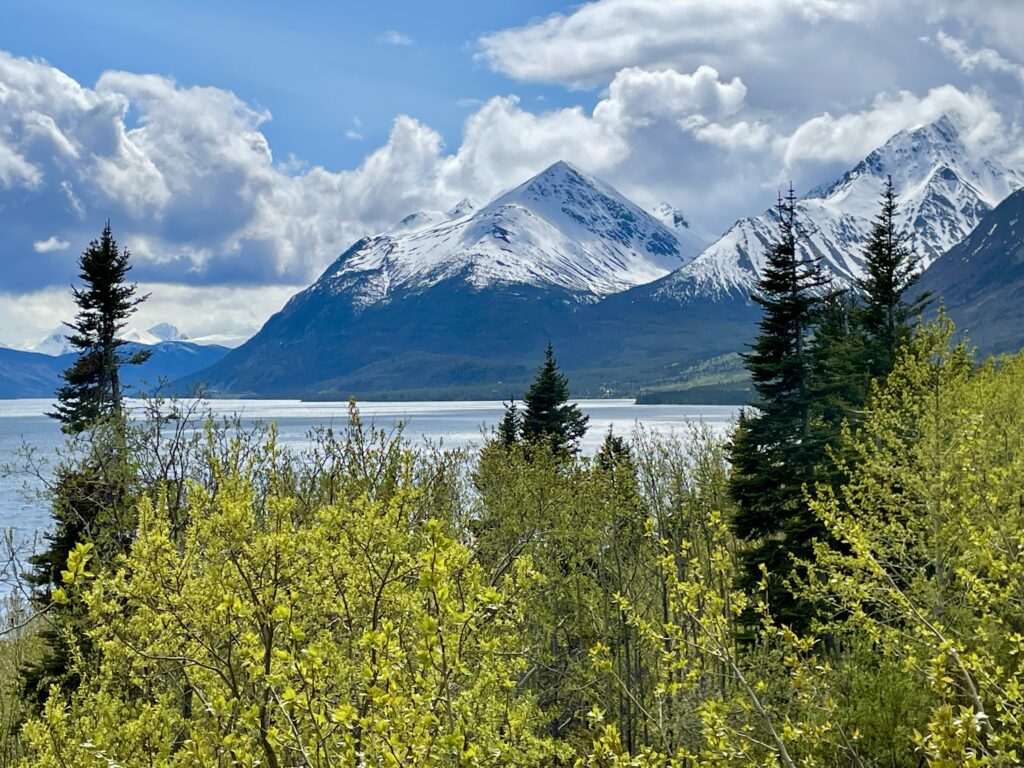
At the same time, we’ve had several periods of glaciation to wear these mountains down. As recent as 10,000 years ago, these valleys were covered in a thick sheet of ice with only the highest peaks protruding above it. When the ice melted and receded up towards White Pass, it gouged these long finger-like grooves into the land. The grooves filled in with water, and that is the series of lakes we are looking at today. Summit Lake, Lake Bernard, Tutshi, Tagish, Lindeman, Bennett and Emerald Lakes are some of the glacially carved waterways we pass on our journey along the Klondike Highway.










The Boreal Forest
As we continue north, the trees drastically change again. Now we are entering our third ecosystem of the day, the Boreal, or Taiga forests. These forests spread across Alaska, northern Canada, Scandinavia and Russia. The main characteristic of these forests are the shape of the trees.
These trees, mostly Black Spruce and White Spruce, are narrow and conical shaped, with short needles and short branches which help shed the heavy winter snows. These trees are adapted to the long, cold winters and nutrient poor soils. They also have shallow root systems, because their roots can’t penetrate too far into the ground.


Why can’t these trees push their roots deeply into the ground? It’s because at this latitude, the ground is permanently frozen. These trees are adapted to living through harsh winters and surviving on top of permafrost. It’s quite a wonder that they grow at all in such an inhospitable ecosystem.
Carcross Desert
After crossing into the Yukon and coming into the community of Carcross, another strange ecosystem emerges… the Carcross Desert! Actually, this isn’t a desert at all. Geologists have discovered that during the last ice age, when glaciers were melting and receding, they formed an ice dam which backed up the water flow and created a large glacial lake. The sand and sediment floating in the meltwater settled to the bottom of this lake in a thick layer. Eventually, the dams broke and the water drained away. Now, what we see is the bottom of the lake with giant sand dunes stretching for miles in every direction.

Wildlife in the Tundra and Boreal Forests
What kinds of wildlife live here? There are many animals at home in these different ecosystems, such as moose and caribou. Caribou are really interesting animals because both the male and females have antlers. Also, they have large hooves helping them to walk over the snow or swim across bodies of water. Caribou are voracious eaters and need to eat as much as two large garbage bags full of mosses and lichens a day. So, their hooves help them dig up the vegetation all year round.
Other animals that live here include porcupine, fox, coyote, wolves, martin and lynx. Marmots play in the rocks while mountain goats and Dall Sheep cling to the rocky cliffs.
We also have bears, which have woken up from their winter nap. Black bears are both black and brown and have a pointed nose and short claws which help them to climb trees. Coastal Brown bears are related to Grizzly Bears in the Interior, but they are actually much larger here at the coast. They have the characteristic hump behind their neck, and long, curved claws to rip a salmon right out of the stream or a ground squirrel out of its nest.
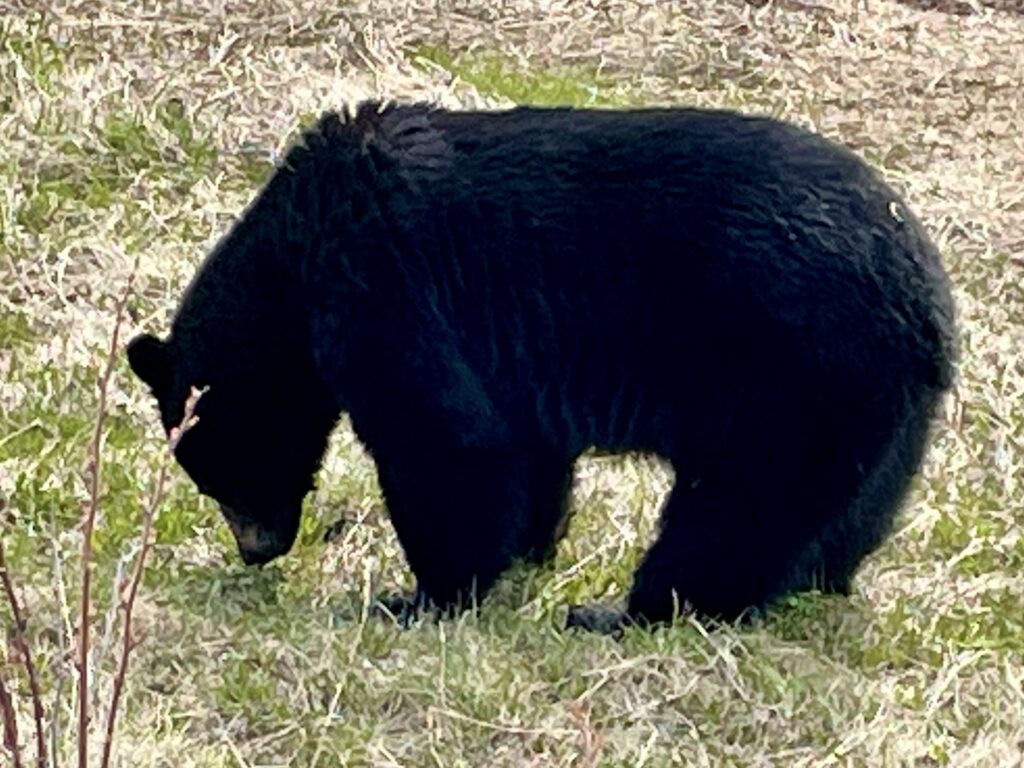
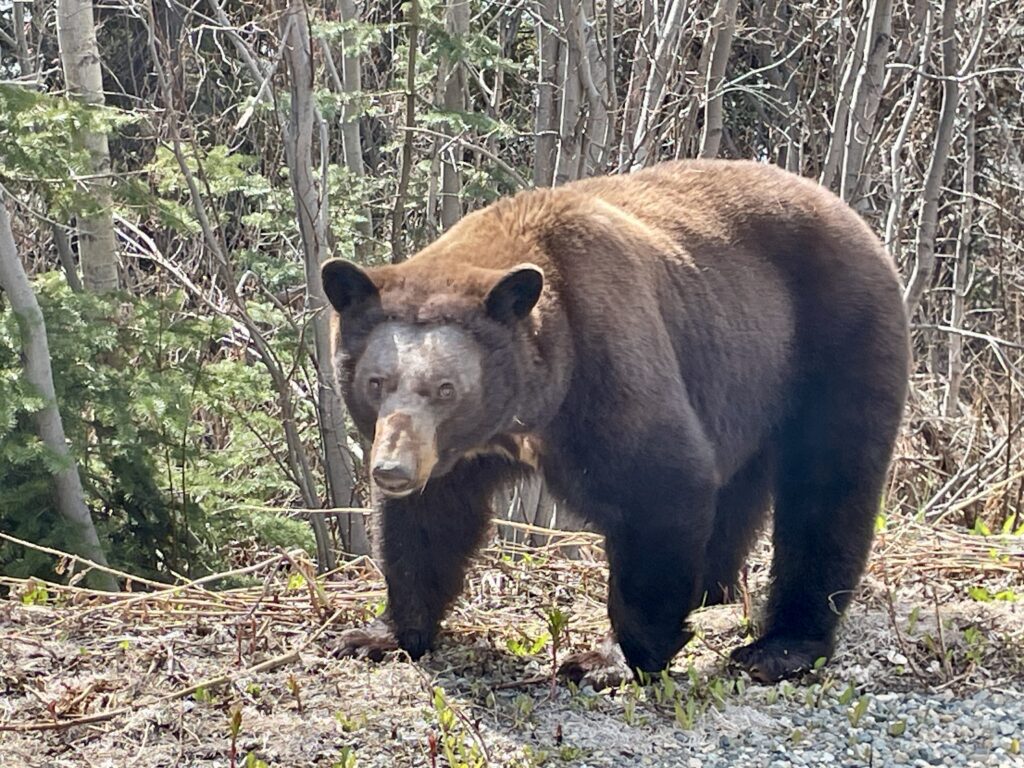
Two black bears on the side of the road. I haven’t seen a grizzly bear yet!
In the springtime, it was quite common for us to see bears along the road. They were coming out of their hybernation- called a torpor – and they were hungry for the lush grass, dandelions and new growth that grew along the highway. They need to eat a lot of ruffage in the spring to kick start their digestive system again. Sometimes, my coworkers were lucky enough to see a mama and her cubs.
But wildlife are, well… wild, and on many days we don’t see any animals at all. On those trips, we have to make a little fun on our own!




Everyday I love driving my passengers to Canada. It’s always a grand adventure. I hope you enjoyed the tour, too!

